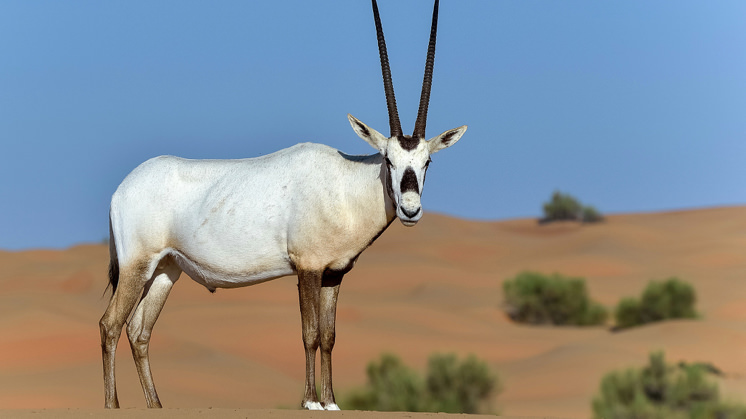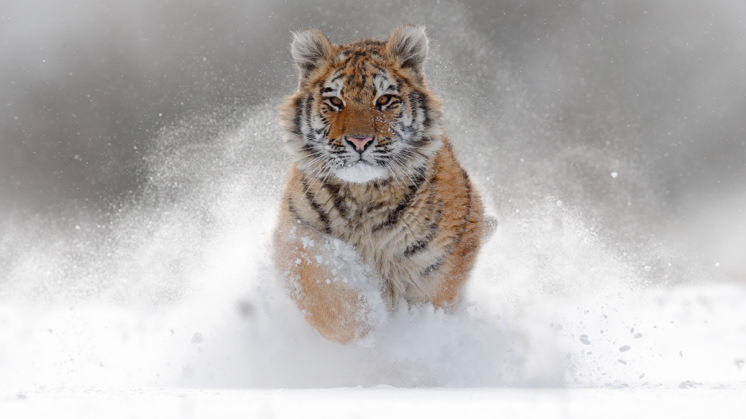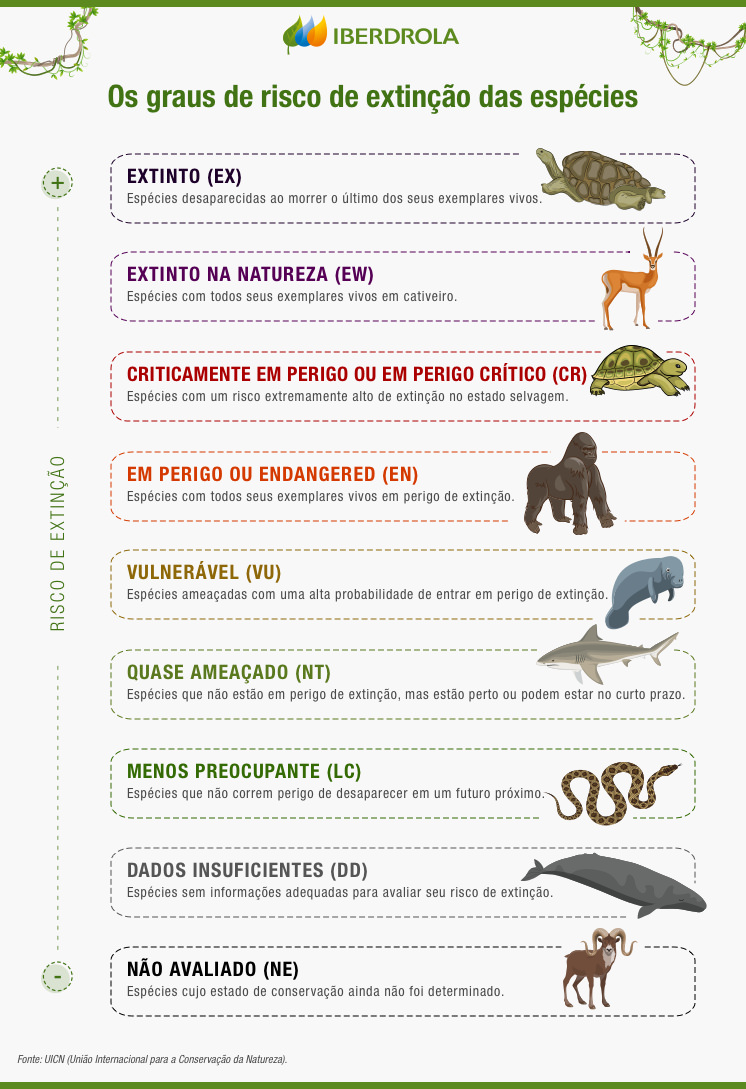Animais salvos da extinção
As espécies que sobreviveram à extinção graças ao conservacionismo ambiental
Os especialistas estimam que 99 % dos animais que alguma vez habitaram o planeta já não existem e, definitivamente, a mão humana teve muito que ver com estas extinções. Porém, em outras situações, algumas espécies conseguiram sobreviver pelo conservacionismo ambiental. Conheça dez animais que foram salvos da extinção.



O rinoceronte branco africano (Ceratotherium simum) chegou a ter os dias contados no final do século XIX. Naquele então, nem os mais otimistas apostavam na sobrevivência de uma espécie com menos de 100 exemplares em toda África, cuja culpa da quase extinção era especialmente da caça furtiva e do avanço do colonialismo. Atualmente, este imponente animal está um pouco mais longe da extinção: há 18.000 exemplares em liberdade, conforme a União Internacional para a Conservação da Natureza (UICN), o que é um autêntico milagre do conservacionismo ambiental.
O que é conservação do meio ambiente
O conservacionismo é um movimento social e político que promove a proteção do meio ambiente e a biodiversidade contra a poluição, as mudanças climáticas, a destruição dos ecossistemas e outros efeitos derivados da atividade humana. Diferentemente da ecologia — contrária a qualquer intromissão do homem na natureza —, os conservacionistas defendem uma exploração sustentável dos recursos naturais.
Mais concretamente, o conservacionismo ambiental se desenvolveu a partir do século XIX e hoje está representado a nível global pela UICN. Esta organização internacional coopera desde 1948 em projetos com governos, comunidades e outras instituições, cedendo sua experiência, conhecimento científico e recomendações para frear a deterioração dos habitats, restaurar os ecossistemas e melhorar o bem-estar dos animais.
Tipos de conservação ambiental (medidas)
A extinção das espécies é um processo natural próprio da evolução, ou seja, da seleção natural: as que melhor se adaptam são as que sobrevivem. Milhares de animais desapareceram ao longo da história — desde os mamutes extintos há 3.700 anos até o lobo ou tigre-da-tasmânia, a foca-monge-do-caribe ou o leopardo-de-zanzibar, desaparecidos nos últimos anos —. Entre as principais causas, estão as seguintes: a degradação do habitat, a caça ilegal e o excesso de exploração, a introdução de espécies invasoras ou o aquecimento global.
As medidas para a proteção e conservação do meio ambiente estão baseadas na organização do espaço, proteção do patrimônio e aproveitamento dos recursos, e incluem algumas como as que veremos a seguir:
A criação de animais em cativeiro para serem colocados em liberdade posteriormente.
A criação de reservas naturais e espaços protegidos para as espécies ameaçadas.
A luta contra o tráfico de animais selvagens, a introdução de espécies invasoras e a caça e pesca descontroladas.
A redução das emissões de CO2, e outros gases de efeito estufa, que aceleram as mudanças climáticas e têm impacto nos habitats e ecossistemas.
A promoção de uma produção sustentável de alimentos, um consumo responsável e uma educação ambiental para a cidadania que incentive um modelo que proteja o meio ambiente.
Dez animais salvos da extinção
Atualmente, existem mais de 31.000 espécies que poderiam desaparecer, conforme a Lista Vermelha de Espécies Ameaçadas da UICN. Porém, nem tudo são más notícias porque todos os anos há animais que são salvos da extinção graças ao conservacionismo ambiental. A seguir, revisamos alguns deles:
1. Baleia cinzenta (Eschrichtius robustus). Este cetáceo de até 15 metros de comprimento e 20 toneladas de peso esteve muito perto da extinção durante o século XIX pela caça de baleias. Contudo, sua população atual é de cerca de 27.000 exemplares e sua situação não é tão preocupante.
2. Gorila-das-montanhas (Gorilla beringei). Os prognósticos prediziam que desapareceriam no ano 2000 devido à destruição de seu habitat. No entanto, esta espécie africana conseguiu se recuperar e atualmente existem mais de um milhar de exemplares.
3. Águia-de-cabeça-branca (Haliaeetus leucocephalus). É outro dos animais que foram salvos da extinção. Antes, havia 417 casais em 1960 e agora mais de 100.000 exemplares. Além disso, sua população continua crescendo.
4. Panda-gigante (Ailuropoda melanoleuca). A situação deste mamífero plantígrado, natural das florestas da China, segue sendo delicada, mas está melhorando. Existem mais de 1.850 indivíduos desta espécie atualmente.
5. Órix-da-arábia (Oryx leucoryx). Este belo antílope chegou a desaparecer em estado selvagem por culpa da caça. Hoje, graças à criação em cativeiro e posterior reintrodução em seu habitat, foi possível alcançar uma população em liberdade de aproximadamente 1.220 exemplares.

VER INFOGRÁFICO: Os graus de risco de extinção das espécies [PDF]
6. Lince ibérico (Lynx pardinus). Este felino único no mundo significa um grande desafio para a criação em cativeiro pela baixa taxa de sucesso. Porém, e apesar de seguir em uma situação muito vulnerável, sua população atual é de 156 exemplares adultos e segue in crescendo.
7. Tigre siberiano (Panthera tigris altaica). É um dos maiores felinos do planeta e outro dos animais salvos da extinção: em meados do século XX, restavam apenas 40 exemplares em liberdade. Atualmente existem cerca de 450.
8. Mico-leão-dourado (Leontopithecus rosalia). Esta espécie brasileira foi vítima do desmatamento e chegou a ter 200 exemplares nos anos 80. Atualmente, existem cerca de 1.400 indivíduos adultos, mas seu futuro segue ameaçado.
9. Grou carunculado (Bugeranus carunculatus). É o maior grou da África e esteve perto da extinção pela destruição de seu habitat. Sua população hoje está entre 6.000 e 6.300 exemplares adultos, mas atualmente está novamente em retrocesso.
10. Bisão ou búfalo americano (Bison bison). Entre os animais salvos da extinção, também se destaca esta espécie que, apesar de ter hoje cerca de 500.000 exemplares — somente entre 11.000 e 13.000 em liberdade —, chegou a baixar de 40 milhões para menos de um milhar nos séculos XIX e XX por culpa da caça.




